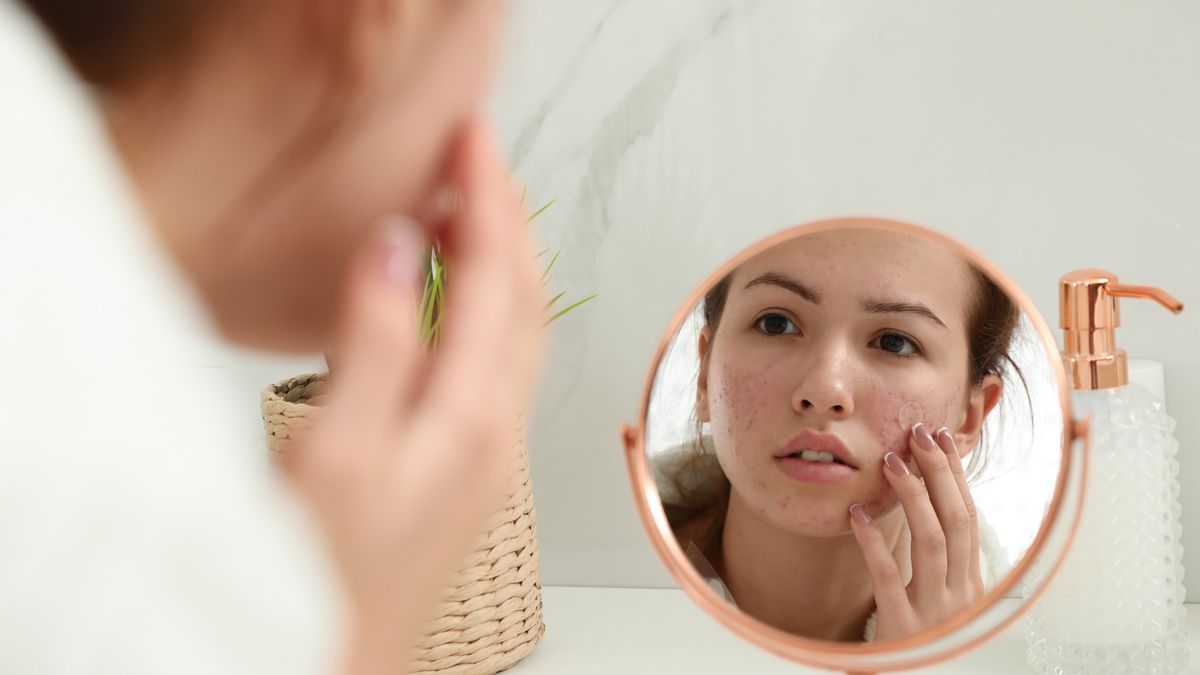Acne’s relationship to food and cosmetics, habits associated with its appearance, and treatments.
he acne Tinea vulgaris is one of the most frequently consulted skin conditions. Afflicted by millions of people worldwide, the disease can appear at any stage of life, but is more common during adolescence: it affects 70% to 87% of adolescents.
However, this is not a pathology unique to adolescence. In some cases, acne has a tendency to become chronic, especially in women, as acne may persist throughout the reproductive years or first appear at a later age.
During puberty, it affects males more, probably due to the influence of sex hormones, although in adults the opposite is true: 3% in males and 11-12% in females.
to understand why occurs and how to treat it, it is necessary to know that there are some main factors that we have acne: Increased sebum production by the sebaceous glands due to hormonal effects; Blockage of hair follicles due to thickening of the outer layer of the skin and irregular shedding of dead skin cells.
Increased sebum and clogged hair follicles create an ideal environment to promote the growth of certain bacteria that are part of the normal skin flora, such as Dermatobacter acnes (formerly known as Propionibacterium acnes). This activates the immune system and triggers an inflammatory response, favoring the emergence and maintenance of this pathology.
he acneOthers may be related to hormonal changes (androgen stimulation) as well as some external factors such as medications, cosmetics, diet, smoking, stress, etc.Here are some questions and answers that can be used as a guide to better deal with the problem acne:
Can diet make acne more likely?
Yes. This remains a matter of debate, but accumulating evidence suggests a possible relationship between diet and endocrine factors, especially insulin response. Certain foods (especially those with a high glycemic index) cause an increase in insulin in the blood, which can induce tissue proliferation and increased androgen synthesis. It also creates a pro-inflammatory state in our body, which contributes to the appearance and severity of acne.
which one andthese foods?
Skimmed milk and its derivatives, ultra-processed food, food containing preservatives, fried food, batter, chocolate, etc.
We always recommend that you try to determine if any particular food is contributing to your outbreak and try to reduce or avoid it. The ideal diet is as varied and healthy as possible, free from overly processed foods.
Are there any medications that can trigger or worsen acne?
Yes. Oral contraceptives that contain high concentrations of progestins, corticosteroids, anabolic steroids, B vitamins (especially B12), antiepileptics, etc.
WhatLDo cosmetics and creams matter?
Yes. Creams and makeup that are greasy or comedogenic can clog pores. It’s important to remember that everything you use on your face needs to be non-comedogenic and water-based (oil-free). At night, it is necessary to remove all makeup or creams from the face.
Can sunlight help us reduce acne?
No, quite the opposite. Although many patients experience significant improvement from exposure to UV radiation because it has some anti-inflammatory properties and sometimes tanned skin can hide the marks of sunburn. acneand it can exacerbate the condition in many other situations, especially when related to heat and humidity.
Overexposure and cumulative UV radiation can have comedogenic effects and trigger exacerbation of acne after a period of maximum exposure. Also, we increase the risk of leaving marks where the pimple was.
Are there other habits associated with the appearance of acne?
Yes. Data on smoking and acne is controversial, although there are many articles about a possible relationship. Our skin is part of the whole. Avoiding stressful situations, getting a good night’s sleep and staying well hydrated can help us have better looking, healthier skin.
Whatc.What is the goal of treating this disease?
There are four basic principles: regulate seborrhea, avoid follicle blockage, reduce bacterial counts and avoid scarring. We can achieve this if we add treatments according to the needs of each patient after consultation in the dermatology department. Among them:
-
correct routine
-
topical acid treatment
-
topical or oral antibiotics
-
peel
-
Other oral treatments (retinoic acid, antiandrogens,
Probiotics)
It’s worth noting that they should always be done under the supervision of a dermatologist. For personalized treatment with GO Aesthetic Medicine that suits your needs, please WhatsApp 3413-862951.
Antonela Pereson, Grupo Oroño Dermatologist

